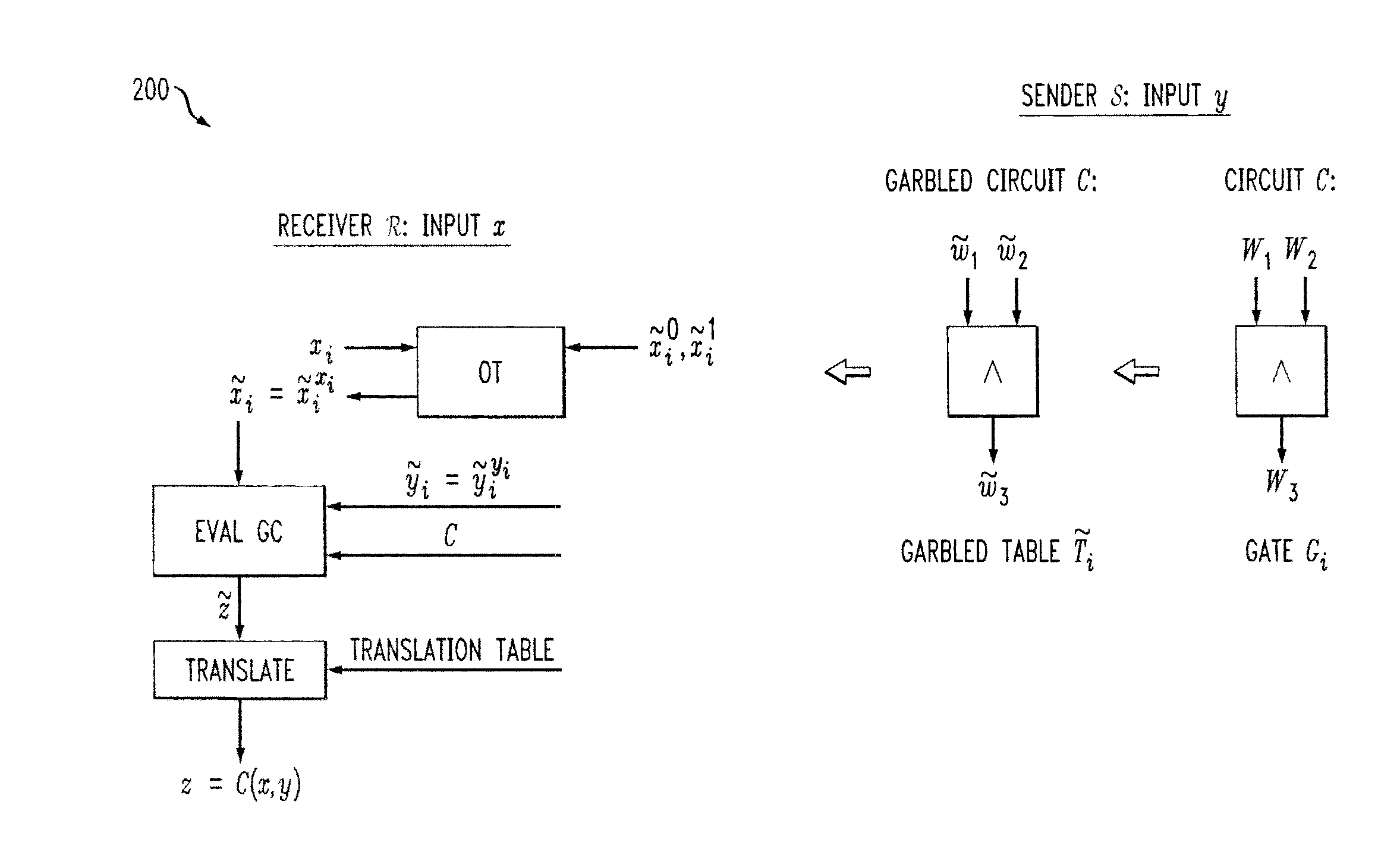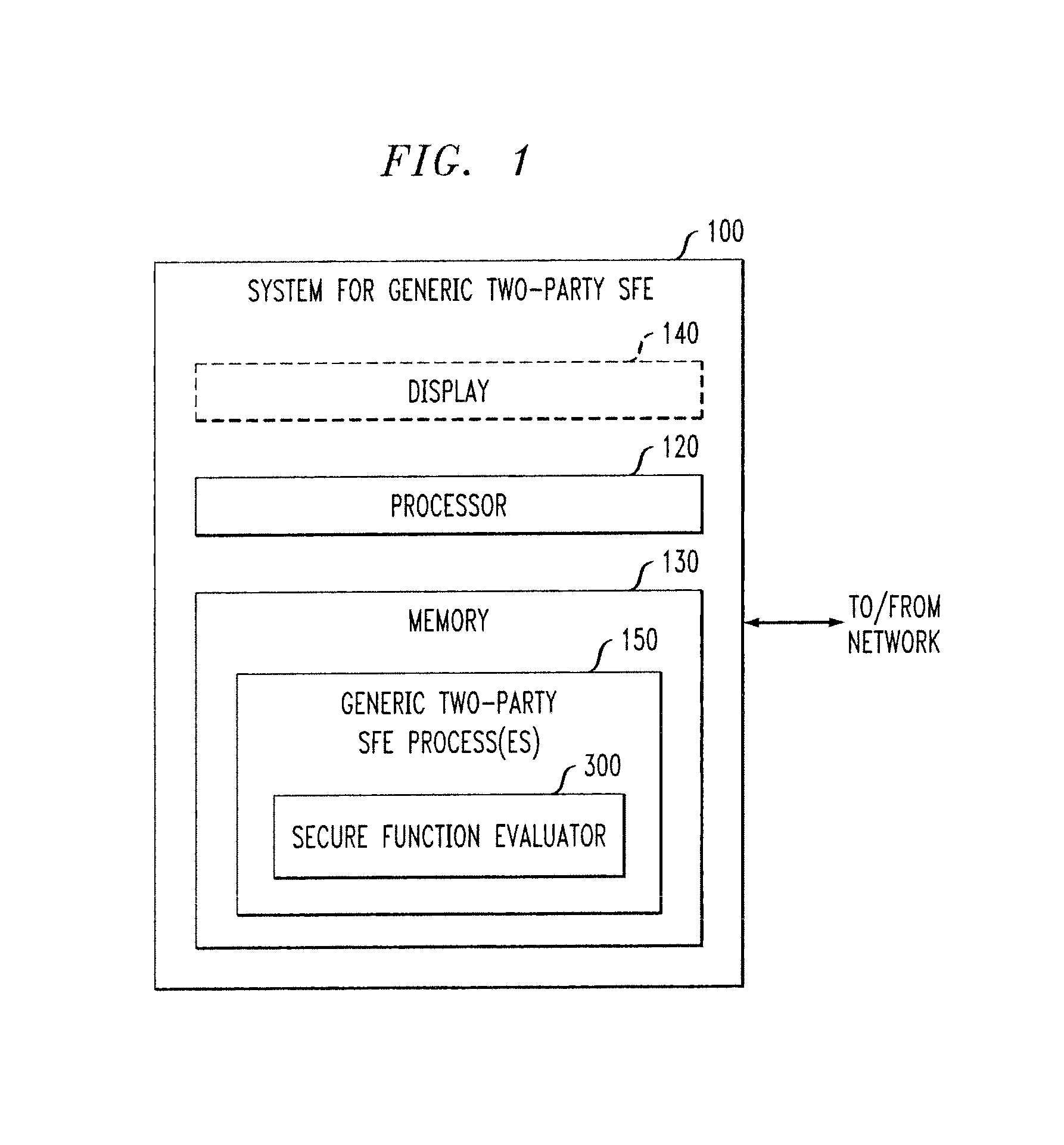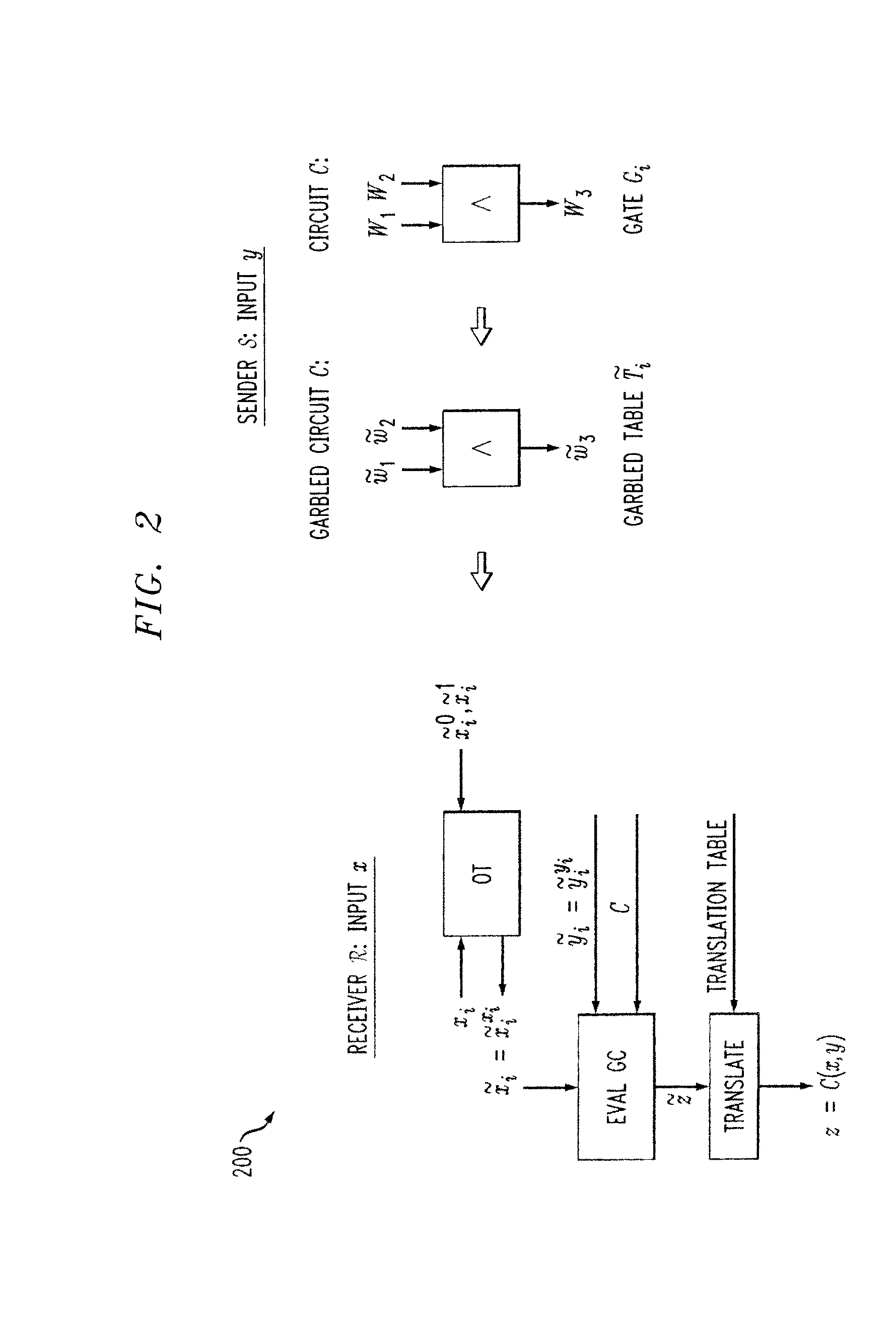Secure Function Evaluation Between Semi-Honest Parties
a function evaluation and semi-honest technology, applied in the field of secure function evaluation, can solve the problems of inability to scale up existing networks, prohibitive data transfer required for sfe, and dominated by the size of g
- Summary
- Abstract
- Description
- Claims
- Application Information
AI Technical Summary
Benefits of technology
Problems solved by technology
Method used
Image
Examples
Embodiment Construction
[0012]Embodiments of the present invention improve upon existing generic two-party SFE algorithms using an information-theoretic version of garbled circuits (GC). According to one aspect of the invention, an information-theoretic version of a garbled circuit C is sliced into a sequence of shallow circuits C1, . . . Cn, that are evaluated.
[0013]In a semi-honest model, secure piece-wise secure circuit evaluation can be achieved as follows. Consider any slicing of C, where some wire wj of C is an output wire of Ci, and is an input wire of Cj+1. Now, when a slice Ci is evaluated, Ci's 1-bit wire key for wj is computed by the evaluator, and then used, via oblivious transfer (OT), to obtain the wire key for the corresponding input wire of Ci+1. This process repeats until C's output wire keys are computed by the evaluator. In order to prevent the evaluator from learning the intermediate wire values of C, the 1-bit wire keys of the output wires of the slice are randomly assigned to wire val...
PUM
 Login to View More
Login to View More Abstract
Description
Claims
Application Information
 Login to View More
Login to View More - R&D
- Intellectual Property
- Life Sciences
- Materials
- Tech Scout
- Unparalleled Data Quality
- Higher Quality Content
- 60% Fewer Hallucinations
Browse by: Latest US Patents, China's latest patents, Technical Efficacy Thesaurus, Application Domain, Technology Topic, Popular Technical Reports.
© 2025 PatSnap. All rights reserved.Legal|Privacy policy|Modern Slavery Act Transparency Statement|Sitemap|About US| Contact US: help@patsnap.com



